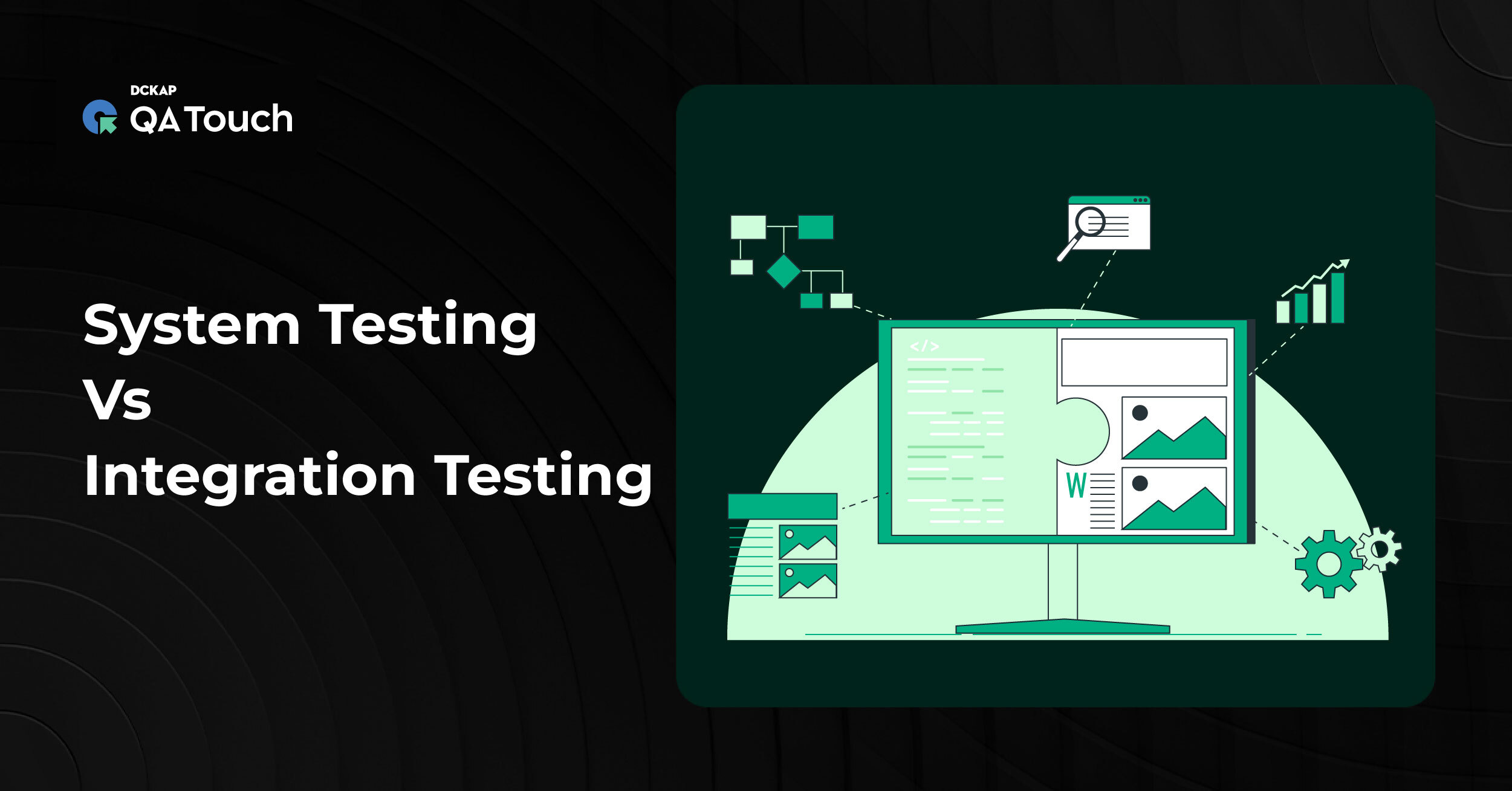Ensuring the reliability and functionality of code requires more than just writing it- it demands rigorous testing. Unit testing and integration testing are two foundational testing approaches in any developer’s toolkit. While both are essential to delivering quality software, they focus on different aspects of the code and serve distinct purposes within the development lifecycle.
Understanding the differences between unit and integration testing is crucial for developers and QA testers. In this blog, we’ll break down what each type of testing is about, highlight their key characteristics, and discuss when to use them to maximize code quality and minimize bugs in production.
What Is Unit Testing?

Unit testing is an essential practice in software development that focuses on verifying the functionality of individual units within your application. When we talk about “units,” we’re referring to the smallest testable parts of your code—this could be functions, methods, or classes.
Objectives of Unit Testing
The main objective of unit testing is for you to verify that each piece of code, or “unit,” functions correctly and independently from other parts of the application. By focusing on small sections of the codebase, unit tests help you uncover bugs early, allowing you to address issues before integrating these units with others. This proactive testing approach reduces the chances of errors later in the development cycle, making your overall process smoother and more efficient.
Characteristics of Unit Testing
Unit testing has several key characteristics that make it effective for ensuring code quality. Here are some of them:
- Isolated Testing: You focus on small, independent pieces of code, such as functions or methods, when performing unit tests. This isolation ensures that each test evaluates a specific unit’s behavior without being influenced by external dependencies or other parts of the application, making it easier for you to identify and fix issues.
- Fast Execution: Unit tests are designed to execute quickly, often in just milliseconds. This speed allows you to run tests frequently throughout the development process, enabling immediate feedback on your code changes. Quick execution encourages you to adopt a test-driven development approach, where you can verify your code continuously as you write it.
- Automated: Typically, unit testing is automated using frameworks like JUnit, NUnit, or pytest. Automation allows you to run tests consistently and repeatedly without manual effort, providing instant feedback on your code changes. This integration with continuous integration/continuous deployment (CI/CD) processes helps maintain code quality and catch bugs early.
- Developer-Driven: As a developer, you are usually responsible for creating and maintaining your unit tests during the coding phase. This close alignment between your development and testing efforts promotes accountability and quality within your team, as you ensure that your code meets the expected functionality and effectively handles edge cases. Writing tests alongside your code fosters a mindset focused on delivering robust, bug-free software right from the start.
What Is Integration Testing?

Integration testing is a critical phase in the software development process that ensures multiple components or units of an application work together correctly after they have been integrated. This type of testing is essential for identifying issues that may not be apparent when units are tested in isolation. Integration testing plays a vital role in confirming that the entire system functions as intended by focusing on the interactions between different components.
Objectives of Integration Testing
The main objective of integration testing is to identify problems that occur when individual units are combined. While unit testing checks each component on its own, integration testing reveals issues that arise during interactions between units, such as data transfer errors or communication problems. This helps you ensure that all parts of the application work smoothly together.
Characteristics of Integration Testing
Here are some of the key characteristics of integration testing:
- Testing Interactions: Integration testing emphasizes how multiple components communicate and collaborate with one another. This testing phase ensures that the integrated units work together seamlessly and that their interactions lead to the expected functionality in a combined environment.
- Larger Test Scope: Integration testing involves a broader scope compared to unit testing. It often requires more complex test scenarios that simulate real-world usage, assessing how different components function together and identifying any issues that may arise from their integration.
- Slower Execution: Integration tests generally take more time to execute than unit tests. Because they assess multiple components and their interactions, they provide a more comprehensive evaluation of the system’s behavior. This additional time investment is crucial for identifying problems that may not be evident when components are tested in isolation.
- System-Driven: Integration testing is typically handled by QA teams or testers after unit tests have confirmed that individual units are functioning correctly. This approach ensures that the overall system integrity is maintained, allowing for a thorough evaluation of how different parts of the application work together in a production-like environment.
Key Differences Between Unit Testing and Integration Testing
| Aspect | Unit Testing | Integration Testing |
| Scope | Focuses on individual units of code in isolation | Evaluates interactions between multiple units within a broader system |
| Purpose | Ensures each unit works as intended | Verifies that combined units function properly together |
| Execution Speed | Runs quickly due to a narrow scope | Generally slower because it involves more components and interactions |
| Complexity | Simpler, more straightforward tests | More complex, requiring detailed scenarios and setups |
| Error Detection | Catches internal logic errors in single units | Identifies issues in communication and data flow between units |
Scope of Testing
When you conduct unit testing, your focus is on individual code components, allowing you to verify each unit’s functionality in isolation. This means you’re testing small, specific sections of your code without interference from other parts of the application. This isolation helps you pinpoint exactly where issues may lie.
On the other hand, integration testing evaluates how these individual units interact when combined. Here, you’re looking at the broader picture, ensuring that the components work together harmoniously within the overall system. This shift in focus is crucial, as problems often emerge only when different units interact.
Purpose of Testing
The purpose of unit testing is straightforward: you want to ensure that each unit of code functions correctly on its own. This means verifying that methods, functions, or classes perform as expected before they’re integrated with other parts of the application.
In contrast, integration testing aims to confirm that these units work effectively when they come together. During integration testing, you are on the lookout for issues that might not have been apparent when testing units in isolation. This includes checking data flow, communication between components, and overall system behavior.
Test Execution and Complexity
Unit tests are generally simpler and faster to execute, allowing you to run them frequently throughout the development process. Because unit testing focuses on a narrow scope, you can quickly get feedback on whether each piece of code is functioning correctly.
Integration tests, however, are typically more complex and take longer to run. This complexity arises because you’re evaluating how multiple components interact with one another, which often requires detailed test scenarios and a more thorough setup. While unit tests are excellent for catching internal logic errors, integration tests shine in identifying issues related to communication and data transfer between units.
When to Use Unit Testing and Integration Testing
Knowing when to implement unit testing vs integration testing is essential for ensuring software quality throughout the development process. Each type of testing serves a specific purpose at different stages of development, and understanding these stages helps you apply the right testing strategy to identify and address potential issues effectively.

When to Use Unit Testing
Unit testing is typically used during the development phase, right after you write individual functions or methods. This early testing approach allows you to verify that each piece of code works as intended, independently from the rest of the application. By testing units in isolation, you can catch bugs and logic errors at their source, which is far easier and less costly than fixing them after integration.
- Timing: As soon as you complete a function or a small piece of code, run your unit tests. This iterative process encourages you to write tests alongside your code, creating a safety net that ensures your units function correctly before they are integrated with other components.
- Benefits: Performing unit testing early in the development process reduces the likelihood of encountering complex issues later. It promotes cleaner, more modular code since developers are encouraged to keep their units simple and focused. Additionally, unit tests provide valuable documentation of how each unit is supposed to behave, which can be helpful for future development and maintenance.
When to Use Integration Testing
Integration testing becomes important once you have completed unit testing. After verifying that individual units are functioning correctly, it’s time to check how these units interact when combined. This phase is critical to ensure that all components of your application work together as expected.
- Timing: Conduct integration testing after unit tests have validated the individual units. This step is essential before moving on to system testing or deployment. It helps to uncover issues that only arise when components are combined, such as mismatches in data formats, unexpected interactions, or failures in communication protocols.
- Benefits: By implementing integration testing, you can ensure that the various units of your application collaborate effectively. This not only helps to catch bugs that may not have been apparent during unit testing but also validates the overall functionality and performance of the integrated system. Integration testing is particularly important in complex applications where multiple components depend on one another, as it helps to confirm that the system as a whole meets its requirements.
Challenges of Unit Testing and Integration Testing
Unit and integration testing each have unique challenges, and understanding these helps you choose the right tests for different needs in your project.
Unit Testing Challenges
Keeping Tests Isolated:
In unit tests, you’re focusing on single functions or classes, ideally without interference from outside code. But to achieve this, you often have to “mock” or simulate other components, which can get complicated and sometimes inaccurate. This isolation effort can also lead to fragile tests that break often.
Maintaining Tests as Code Changes:
Since unit tests dive deep into the specifics of your code, even small tweaks to the codebase can cause many tests to fail. This is frustrating, as it means you’ll be spending more time fixing tests rather than just building features.
Getting Full Code Coverage:
It’s challenging to ensure unit tests cover every corner of your code, especially when you have lots of conditions or complex logic. You’ll need to plan carefully to make sure you’re not missing hidden bugs.
Narrow Focus on Components:
Unit tests don’t tell you if different parts of your system work well together. Even if each unit test passes, that doesn’t mean your whole system will work seamlessly once integrated.
Integration Testing Challenges
Dealing with Dependencies:
Integration tests are about checking how parts of your system interact, but this means you need all those parts up and running—databases, services, or external APIs. Setting these up reliably is tricky and takes time.
Unstable (“Flaky”) Tests:
Integration tests can fail unexpectedly due to things like network issues or resource contention, making them unreliable. Tracking down and fixing flaky tests is time-consuming and frustrating.
Time-Consuming Setups:
Integration tests often need complex setups—like setting up a database or configuring services—which adds extra time and effort. Automating these setups can help, but it’s not always easy to do consistently.
Slower Test Execution:
Compared to unit tests, integration tests are slower because they involve multiple parts of the system. This means they take longer to run, so it’s harder to get fast feedback when you’re developing.
Finding the Balance
In practice, combining both types of tests is essential. Use unit tests to quickly check individual parts, and then add integration tests to ensure everything works together. Together, they give you a robust testing foundation, helping you catch issues early and deliver more reliable software.
Best Practices for Unit Testing and Integration Testing
Here are some best practices that can help you get the most out of unit and integration testing. Following these can make your tests more effective, reliable, and maintainable.
Unit Testing Best Practices
- Test one thing at a time by keeping each test focused on a single function or behavior.
- Use mocks and stubs, only replacing dependencies when needed to avoid over-complicating tests.
- Try TDD (Test-Driven Development) by writing tests before the code to help design clean, testable code.
- Keep tests fast by avoiding real databases or external resources so they run quickly.
- Aim for high coverage by testing critical logic, but don’t worry about covering every single line.
- Use clear test names to make it easy to understand each test’s purpose at a glance.
- Make tests independent by ensuring each one is self-contained and doesn’t depend on other tests.
- Cover both positive and negative scenarios, testing for both expected outcomes and potential errors.
Integration Testing Best Practices
- Focus on real interactions by testing how components work together, not their internal details.
- Use realistic data and environments, testing in setups similar to production with realistic data to improve accuracy.
- Minimize flaky tests by reducing randomness and network reliance, avoiding tests that fail unpredictably.
- Clean test data by using isolated data and resetting after each test to prevent cross-test contamination.
- Prioritize key workflows, focusing on testing essential paths like sign-ups or payments.
- Use dependency injection to swap out components like databases for test versions easily.
- Automate setup and teardown processes to ensure consistent and faster testing.
Final Thoughts
Unit and integration testing are critical to building quality software, each serving a unique role in the software development lifecycle. Unit testing provides a strong foundation by ensuring individual components work as intended, while integration testing verifies that these components work well together. For QA testers, understanding when and how to use these testing methods is critical to improving software reliability and maintaining high-quality standards.
QA Touch is an efficient test management platform that provides the tools and support necessary to help you manage and execute your testing efforts effectively. Whether you’re focused on unit testing, integration testing, or any other form of testing, we’re here to help you streamline your testing processes.
Ready to take your testing to the next level? Start your 14-day free trial today!










